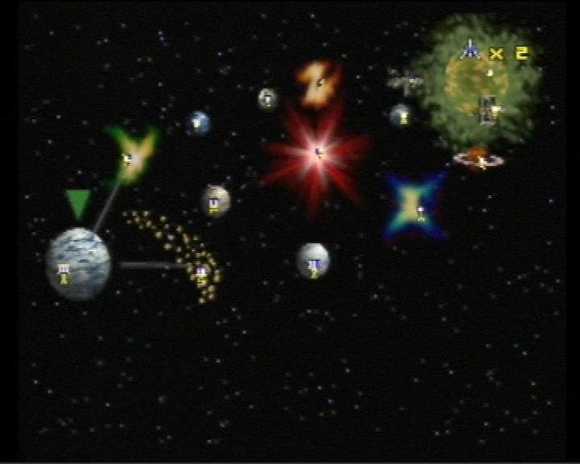Star Fox 64: Design Mission Accomplished
With the recent releases of narrative driven AAA titles such as Bioshock Infinite and Mass Effect along with the next-generation looming on the horizon, the discussion of game design has yet again taken center stage. Large publishers are looking to balance the addictive re-playability of MMOs, the lucrativness of multi-player FPSs, and the rich immersion of single-player action-RPGs. On the other hand, indie developers such as thatgamecompany toy with the idea of striped down mechanics to balance heavy narrative as seen in Journey. Most games now attempt to implement “moral” decisions, often very polar and very poorly.
With today’s technology, possibilities seem limitless for gaming’s next-generation. However, as the past will show, limits without powerful hardware, online connectivity, and large player communities, can provide some of the best work! As untimely as it may seem, developers should look to games of the past for inspiration on the undiscovered future.
Example: Star Fox 64.

Star Fox 64 championed the idea of a branching, non-linear “linear” story. As one may recall, the map shown above is presented to the player at the onset of Star Fox’s journey. And, as most players began to discover, there remained a plethora of unvisited planets and galaxies by the game’s end.
Without access to GamePro or online resources, most couldn’t quite figure out why those extra stages existed or how to reach them. Those gung-ho enough to research, attentive enough to listen for, or lucky enough to stumble upon the difficult but more rewarding progression, could reap the rewards of a richer story, unique mechanics/vehicles/characters, and largely undiscovered levels. Buddhist like patience rewarded the mastery of repetition.
The beauty of this design lies in the fact that Nintendo developed a game of which 50% would remain untapped by many players. Nintendo taunted the player with what could be, teasing them with evidence of something more, and tucked mystery into each level with hidden paths and special instances. Choices made earlier in the game would not only effect Fox’s path but offered different consequences in future levels including character cameos and extra help. They even built an entire mechanic and vehicle class, The Blue Marine, used on one level found on the hard path, Aquas.
Nintendo also innovated on the standard “difficulty selection” cliché that is still often used in today’s games. Star Fox 64 tailored the game’s difficulty to the player’s ambition. If one was deft enough to unlock a level’s secret path, they were rewarded with a more difficult stage rather than just increasing health of baddies or offering enhanced AI. As Star Fox 64 displayed, baking in difficulty based on a player’s abilities and determination allowed for Nintendo to create a unique path without compromising the integrity of the game’s intended balance.
Star Fox 64‘s design may not be the exact answer the future of gaming needs, but it’s innovation is. Multi-path design, story changes based on accomplishments, a unique take on difficulty settings, and it’s ability to tease players with stages that require the practice and precision only replaying can offer are the sort of out-of-the-box thinking the industry needs in this time of change.
While Bioshock and Bioshock Infinite provide fantastic narrative, their mechanics and level progression never quite impress like Super Mario 64 or Final Fantasy X of yesteryear. Call it age, but the feeling that the limitations set for developers in past provided more opportunity for unique game design seems to be ever present.
Risk is worth it. Even if a small few seek out all of the secrets of a game, it will ensure that it continues to be replayed, rediscovered, and re-loved. Defeating the tropes players are continually subjected to and letting the game unfold around the player’s accomplishments and mindful exploration provide an infinitely more rewarding experience.
